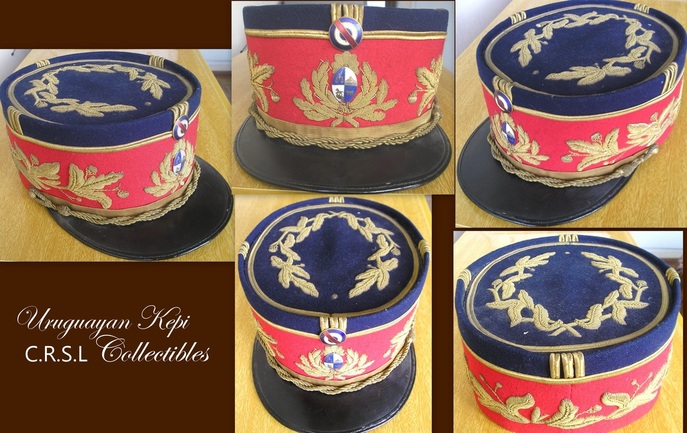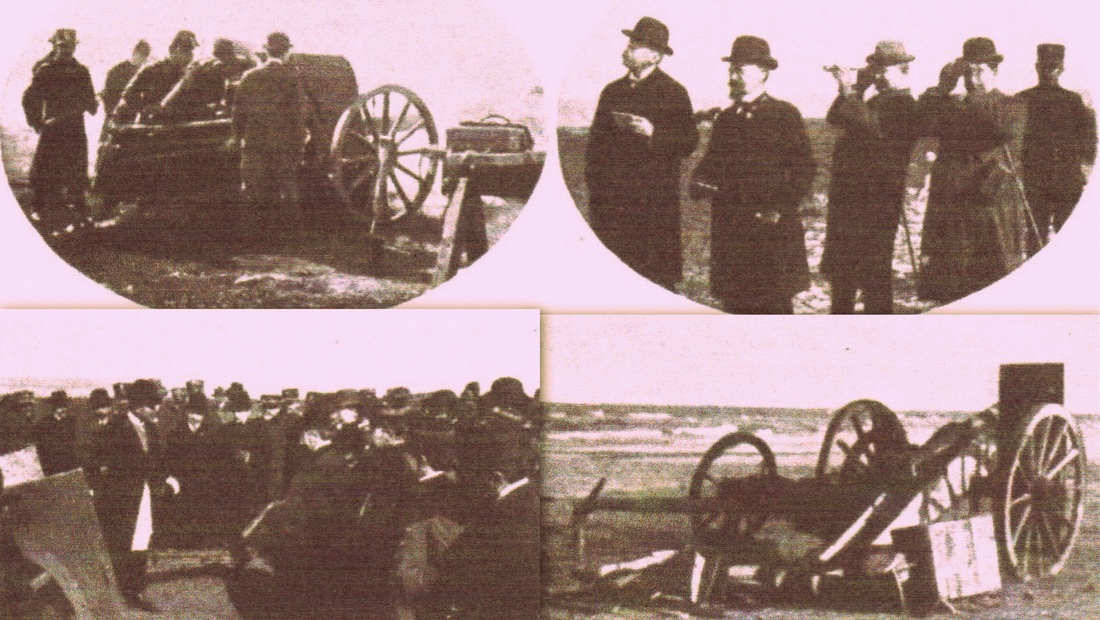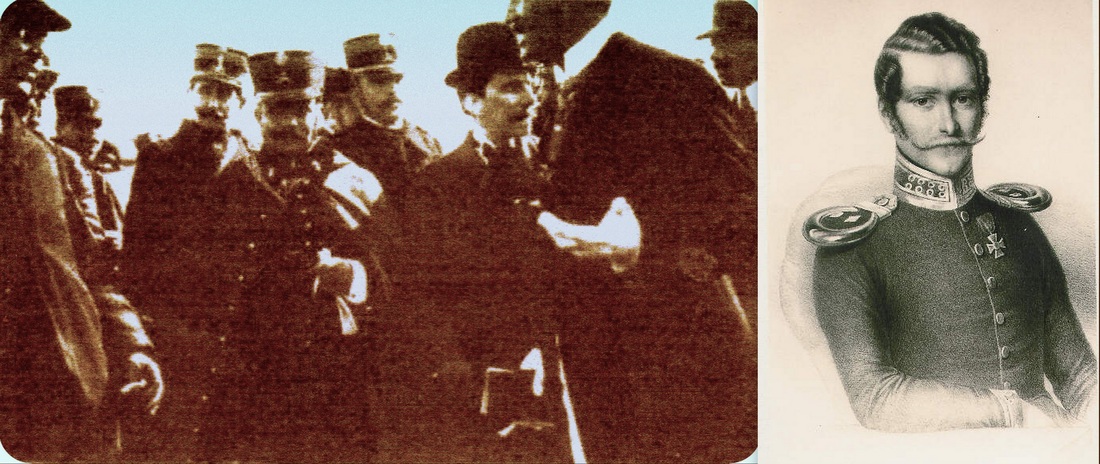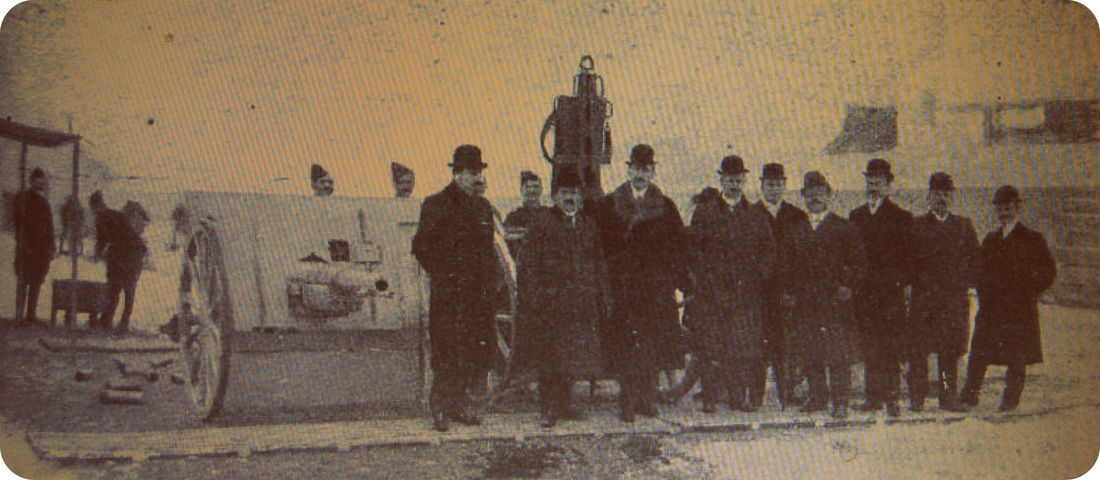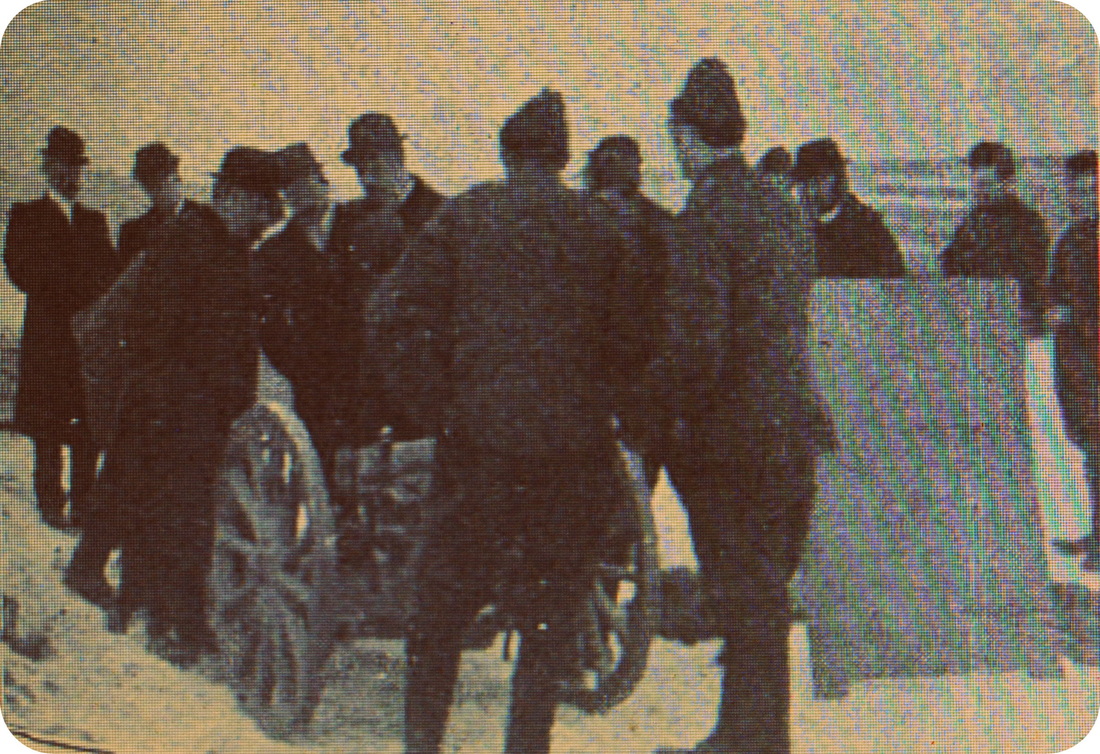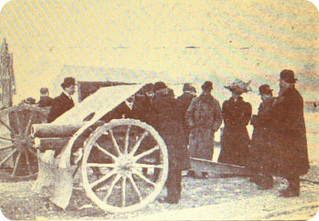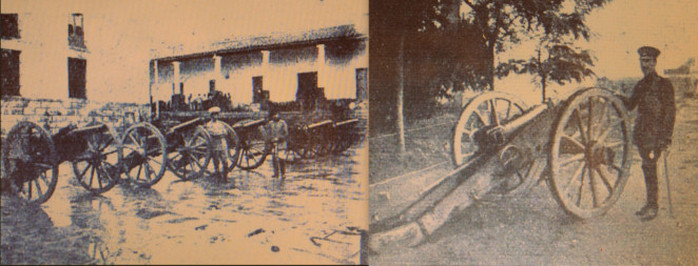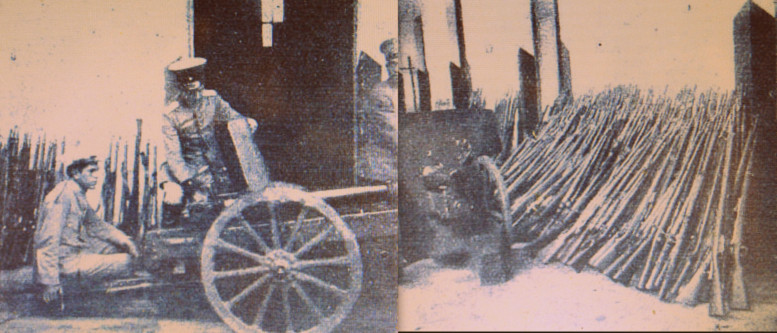Krupp pieces in Uruguay 1907.
In the photo is a representative of Krupp in South America, a veteran German artillery officer Horst Von Restorff, presenting the Krupp 75mm L28 cannon to Uruguayan president Claudio Willman en 1907. The cannon was adopted by Uruguay in 1909. The cannon destroyed a target cannon during the demonstration at 2500 meters. Photos: Caras y Caretas 1907.
In the photo is the beach of Carrasco where a polygon for the Krupps was improvised. You can see the mannequins and the effects of the 75mm.
Baron Von Restorff with Mr Williman (President of Uruguay 1907-1911).
Left howitzer open fire in a maneuver with participation of Argentine and Bolivian armies. Right: General Ricchieri, Colonel Dellepiane and possibly Von Restorff, representative of Krupp Cia in Buenos Aires. This may have been an opportunity to present Krupp products to the Bolivians. Photos: Caras y Caretas 1903.
The 1905 Model:
According to a newspaper of Montevideo from this time, the representative of Krupp attributed the following main advantages to the riffled barrel: stability and speed, releasing thirty rounds per minute. With the first shot, the carriage
brakes in the soil and avoids any jitter in the weapon change of location. The gunners sit peacefully and shoot faster in the carriage from which they operate without moving the gun protected by a large shield for operations point. The closed box of the projectiles is located next to the barrel by means of a series of steel plates arranged conveniently. Suppliers of ammunition are not less protected than Part servers. The Chief of drums can find refuge behind the shield which can raise up to three meters high to observe the enemy without increased risk. To aim, the barrel telescope is very refined. The rise is mechanically moved in any direction, only with the use of a lever. The shells explode in the air and at the desired distance, with a device that mechanically triggers the degrees. The cannon can beat enemy positions from a low position,
almost invisible, since the marksmanship is fixable from a reference point located in the rear. The Japanese acquired this model and manufactured it under license as the Type 38, 75mm.
According to a newspaper of Montevideo from this time, the representative of Krupp attributed the following main advantages to the riffled barrel: stability and speed, releasing thirty rounds per minute. With the first shot, the carriage
brakes in the soil and avoids any jitter in the weapon change of location. The gunners sit peacefully and shoot faster in the carriage from which they operate without moving the gun protected by a large shield for operations point. The closed box of the projectiles is located next to the barrel by means of a series of steel plates arranged conveniently. Suppliers of ammunition are not less protected than Part servers. The Chief of drums can find refuge behind the shield which can raise up to three meters high to observe the enemy without increased risk. To aim, the barrel telescope is very refined. The rise is mechanically moved in any direction, only with the use of a lever. The shells explode in the air and at the desired distance, with a device that mechanically triggers the degrees. The cannon can beat enemy positions from a low position,
almost invisible, since the marksmanship is fixable from a reference point located in the rear. The Japanese acquired this model and manufactured it under license as the Type 38, 75mm.
Uruguayan commission at Schneider Le Creusot Plants. 1909.
The above photo and those that follow deal with the Uruguayan commission in France under Colonel Schweizer, He was the Director of the Academia Militar de Montevideo and met with the head of commerce of Uruguay in Schneider factories in Creusot, Francia in 1909 to test artilerry pieces. Along with them were the Marquis de Brantes and Count of Jugne examining the pieces.
In the photos are examples of mountain pieces. The shield is one of the first that was made in a curve.
Schneider 75mm field and Mountain gun. Caras y Caretas 1908.
Krupps, Maxims and Mausers in The Paraguayan Revolution of 1911:
The Paraguayan Army Officers, inspecting the revolucionaries arsenal. Photos: Caras y Caretas 1911.
Spanish-Independence War Artillery Survivor:
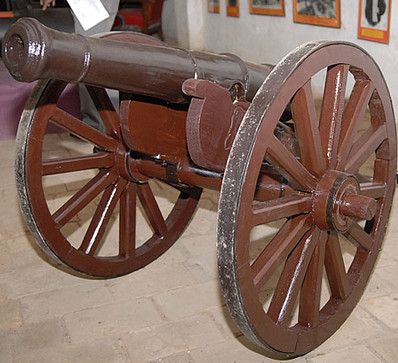
In the photo is a piece of Royal Artillery, survivor of the Spanish in South America. "Cañón Estrella or Independence War Cannon". Possibily it also was used in The Paraguayan War from 1864–1870. This muzzle-loading cannon ( 6-pounder?), is in great shape, and perfectly restored and preserved in the Museum of Artillery of Paraguarí in Paraguay. Typically this gun was of low caliber and fired spherical projectiles shrapnel at short distance. Its components are original except for the gun carriage. Wheels and cannon are 100% original. It is an example of the artillery of the independence period, to take in reference to the type of artillery of this time. Museo de Artillería de Paraguarí, Paraguari Artillery Museum.
Source: Luján Román .Photo: Sebastián Cáceres (ultimahora.com)
Source: Luján Román .Photo: Sebastián Cáceres (ultimahora.com)
